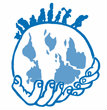Throughout the coronavirus disease 2019 (COVID-19) pandemic, inequities in access to COVID-19 vaccines, diagnostics and therapeutics have been vast and persistent. By the end of 2022, only 26% of people in low income countries had received a COVID-19 vaccine dose.1 Less than one in 50 of the three billion diagnostic tests administered globally by March 2022 were performed in low income countries.2 Further, low and middle income countries have had very little access to therapeutics, particularly antivirals such as nirmatrelvir–ritonavir (Paxlovid, Pfizer) and molnupiravir (Lagevrio, Merck Sharpe & Dohme).2
Unless action is taken quickly, the gap in access to antivirals between high and low income countries seems set to repeat the inequities in distributing COVID-19 vaccines. The cost of antivirals is prohibitive for low and middle income countries. While Pfizer has agreed to provide 10 million Paxlovid courses at lower prices to low income countries through UNICEF and the Global Fund,3 this represents only a small fraction of Pfizer's production. Both Pfizer and Merck Sharpe & Dohme have entered licensing agreements with the Medicines Patent Pool to enable future generic manufacture of their treatments for low and middle income countries.4 However, these agreements exclude many middle income countries that would struggle to pay the higher prices set by Pfizer and Merck Sharpe & Dohme.
The exercise of intellectual property rights is at least partly to blame.5 Intellectual property rights, while intended to incentivise innovation, create monopolies which can work against equitable access to the resulting products.6 Systematic reviews of the evidence of their impact on access to medicines have found negative effects on medicine prices, affordability, consumer welfare, and costs to consumers and governments.7, 8
